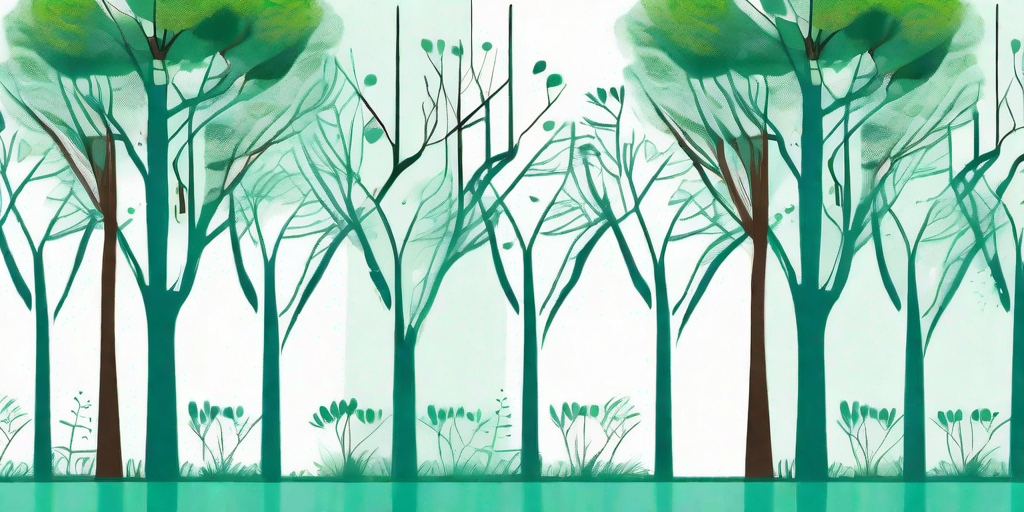
If you're a budding gardener (pun absolutely intended), you may have heard of the term 'tree grafting'. It sounds like a complex, scientific process, but don't let that scare you off. In reality, it's a simple, yet fascinating technique that can help you create a thriving, diverse garden. So, grab your gardening gloves, a sturdy grafting knife, and let's dive into the world of tree grafting.
What is Tree Grafting?
Tree grafting, in the simplest terms, is a horticultural technique where you join two plants together so they continue their growth as one. It's like a botanical marriage, where two become one, but without the fancy ceremony and the wedding cake.
Why would you want to do this, you ask? Well, grafting allows you to combine the best characteristics of two different trees. For instance, you could graft a branch from a tree that produces delicious apples onto a tree that's resistant to disease. The result? A disease-resistant apple tree. It's like creating your own botanical superhero.
The Art of Grafting: A Step-by-Step Guide
Now that you know what tree grafting is and why it's done, it's time to learn how to do it. Don't worry, it's not as daunting as it sounds. In fact, it's quite a fun process, almost like a DIY project for your garden.
Before we get started, remember that patience is key. The process takes time, and the results won't be immediate. But trust us, the wait will be worth it.
Step 1: Choose Your Trees
The first step is to choose the trees you want to graft. One will be the rootstock (the base tree), and the other will be the scion (the tree you want to graft onto the rootstock). Choose trees that are compatible with each other for the best results.
Remember, this is like a marriage. You wouldn't marry someone you're not compatible with, would you? The same principle applies to trees. Some trees just aren't meant to be together.
Step 2: Prepare Your Tools
Next, prepare your tools. You'll need a grafting knife, grafting tape, and a disinfectant to clean your tools. A clean cut and clean tools are crucial to prevent disease and ensure a successful graft.
Think of it as a surgical procedure for your trees. You wouldn't want a surgeon operating on you with a dirty scalpel, would you? The same goes for your trees.
Step 3: Make the Cut
Now, it's time to make the cut. Cut a small, slanting slice on the rootstock, and a matching one on the scion. The aim is to make the two cuts fit together perfectly, like puzzle pieces.
Be careful during this step. Remember, you're performing surgery on your trees. A botched cut could lead to a failed graft, and nobody wants that.
Step 4: Join the Trees
Once you've made the cuts, it's time to join the trees. Fit the cut surfaces of the rootstock and scion together, making sure they align perfectly. Then, secure them with grafting tape.
Think of the grafting tape as a bandage, holding the two trees together while they heal and grow into one. It's a crucial part of the process, so don't skimp on it.
Common Mistakes to Avoid
Like any new skill, tree grafting comes with its own set of potential pitfalls. But don't worry, we're here to help you avoid them.
One common mistake is choosing incompatible trees. Remember, not all trees are meant to be together. Do your research and choose trees that are compatible with each other.
Another mistake is making sloppy cuts. Precision is key when it comes to tree grafting. A clean, precise cut will increase your chances of a successful graft.
Finally, don't forget to be patient. Tree grafting is a slow process, and it can take a while to see the results. But trust us, the wait will be worth it.
FAQs
- Can I graft any two trees together?
No, not all trees are compatible for grafting. It's best to graft trees within the same species or genus.
- When is the best time to graft trees?
The best time to graft trees is in late winter or early spring, when the trees are still dormant but about to start new growth.
- How long does it take for a graft to heal?
It can take anywhere from a few weeks to a few months for a graft to heal, depending on the type of trees and the grafting technique used.
Conclusion
Tree grafting is a fascinating and rewarding technique that can help you create a diverse, thriving garden. It may seem daunting at first, but with a bit of practice, you'll be grafting trees like a pro in no time.
Remember, the key to successful tree grafting is patience, precision, and the right tools. So, grab your grafting knife and get started on your tree grafting journey. Happy grafting!















